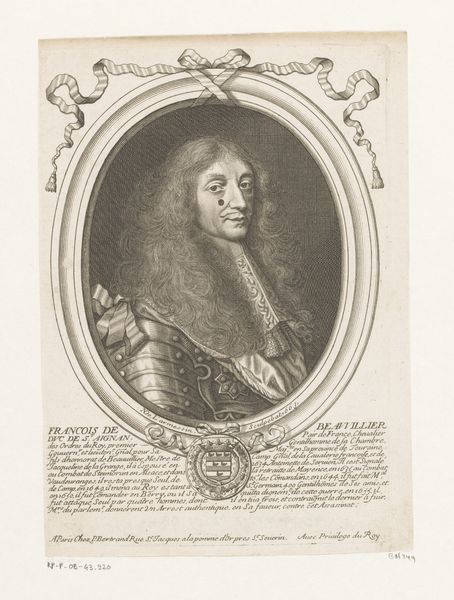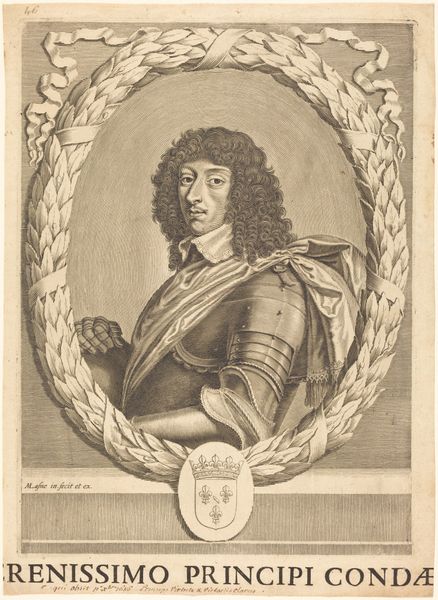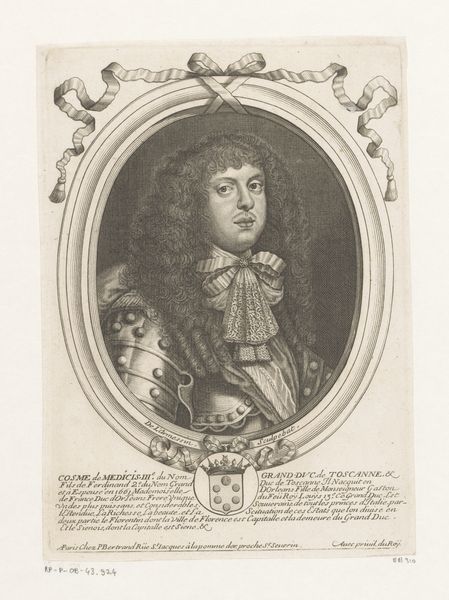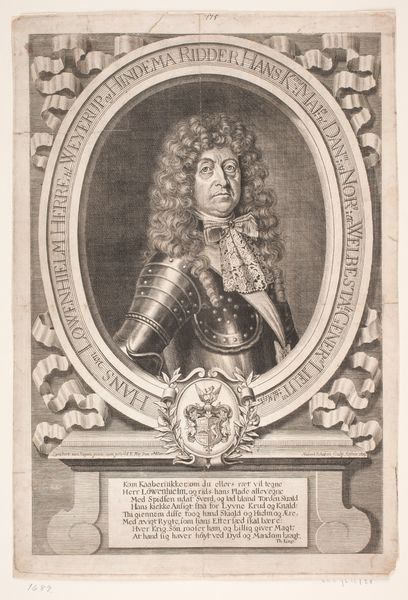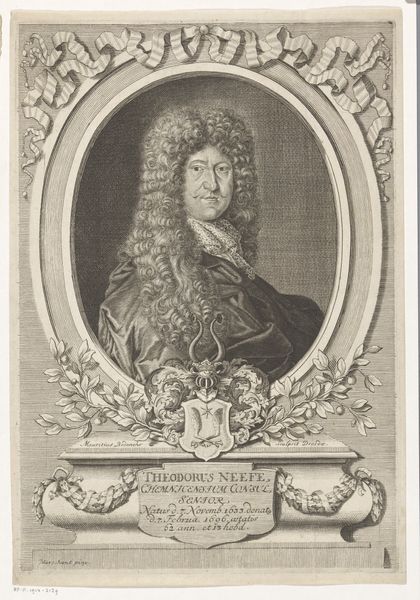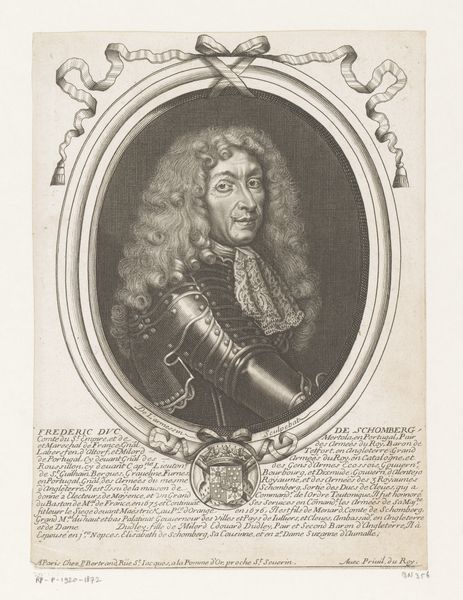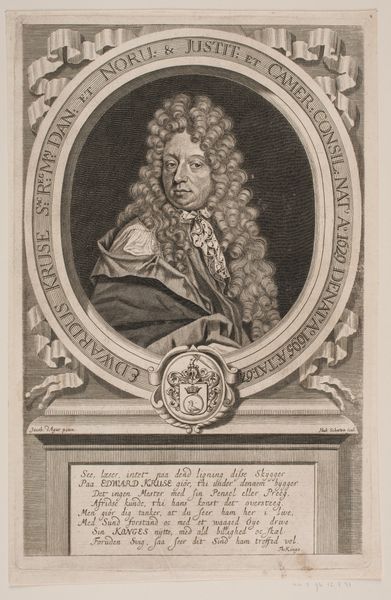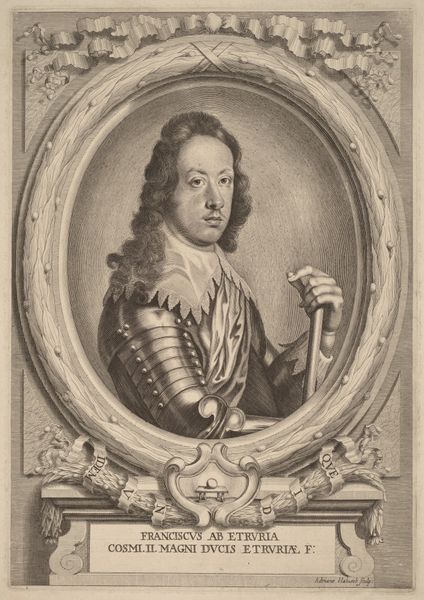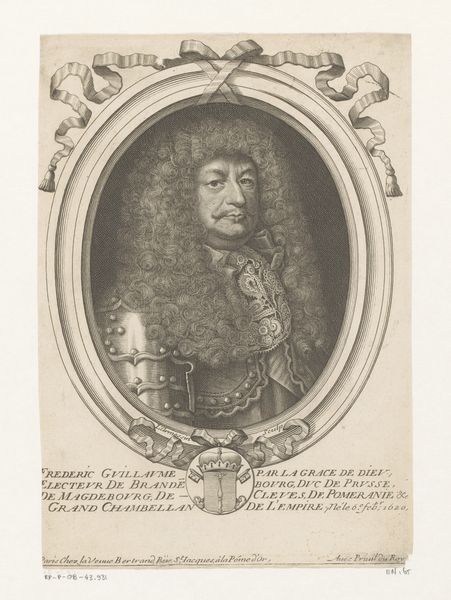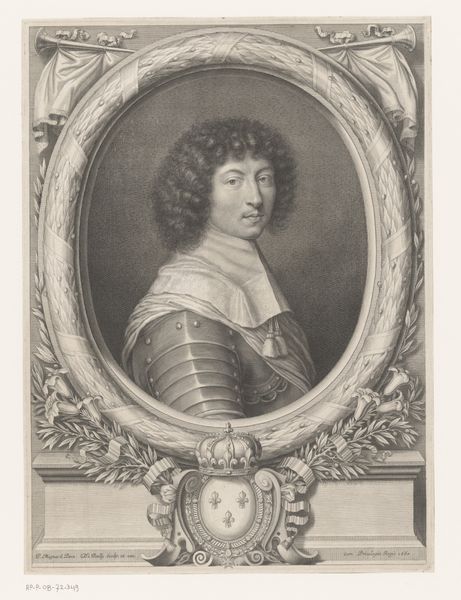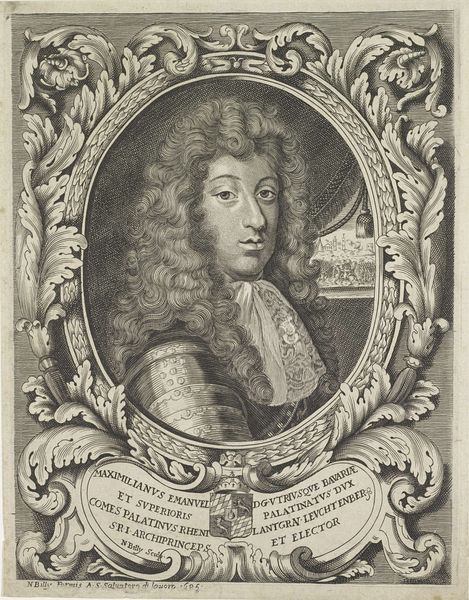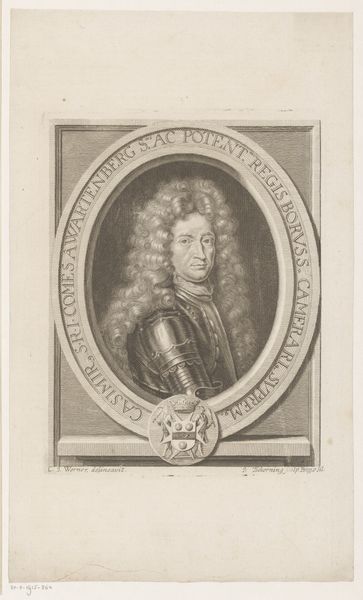
print, engraving
#
portrait
#
baroque
# print
#
old engraving style
#
portrait drawing
#
history-painting
#
engraving
Dimensions: 176 mm (height) x 122 mm (width) (bladmaal)
Editor: This is a print of Christian V from 1683, by Louis de Chomond Boudan, housed here at the SMK. It's a very formal portrait, surrounded by ornate details, and at first glance, it seems to embody a strong sense of power and authority. What do you see in this piece beyond the initial impression? Curator: Beyond power and authority, I see a reflection of the complex social and political dynamics of the late 17th century. Consider the context: Christian V ruled during a period of significant social stratification and colonial expansion. The lavish details, like the armour and the elaborate frame, speak to the constructed nature of royal identity and the visual language of dominance. This image was designed to broadcast authority, but what power dynamics were truly at play? Who was excluded from this picture? Editor: That’s interesting. I hadn’t thought about it in terms of who is absent. So, how does this portrait function within those societal structures? Curator: It acts as a form of propaganda, legitimizing Christian V’s rule. The inscription and imagery associated with him emphasizes piety and justice which aims to reinforce the idea of divinely ordained authority but it can also highlight what the artist omits to be critical about the King and monarchy in general. Who actually benefitted from the "justice" the image promotes? Considering whose voices aren’t amplified here is crucial to unraveling its underlying message. Can you notice those subtle visual clues? Editor: Now that you mention it, the inscription and coat of arms seem strategically placed to underscore the King’s virtues and lineage, reinforcing a specific narrative of leadership and righteousness. What are you thoughts? Curator: Precisely. And in that constructed narrative lies a key point for contemporary viewers: recognizing how portraits such as this actively shaped and perpetuated unequal power structures. They are powerful visual testaments and also tools to keep specific parties underrepresented in a time of oppression. Editor: I'm starting to see how unpacking the layers of history and social context really changes the way you understand a seemingly straightforward portrait. Thanks! Curator: It’s all about understanding the image not just as a representation, but as an active participant in historical power dynamics. Now you can explore similar things within our contemporary time.
Comments
No comments
Be the first to comment and join the conversation on the ultimate creative platform.
